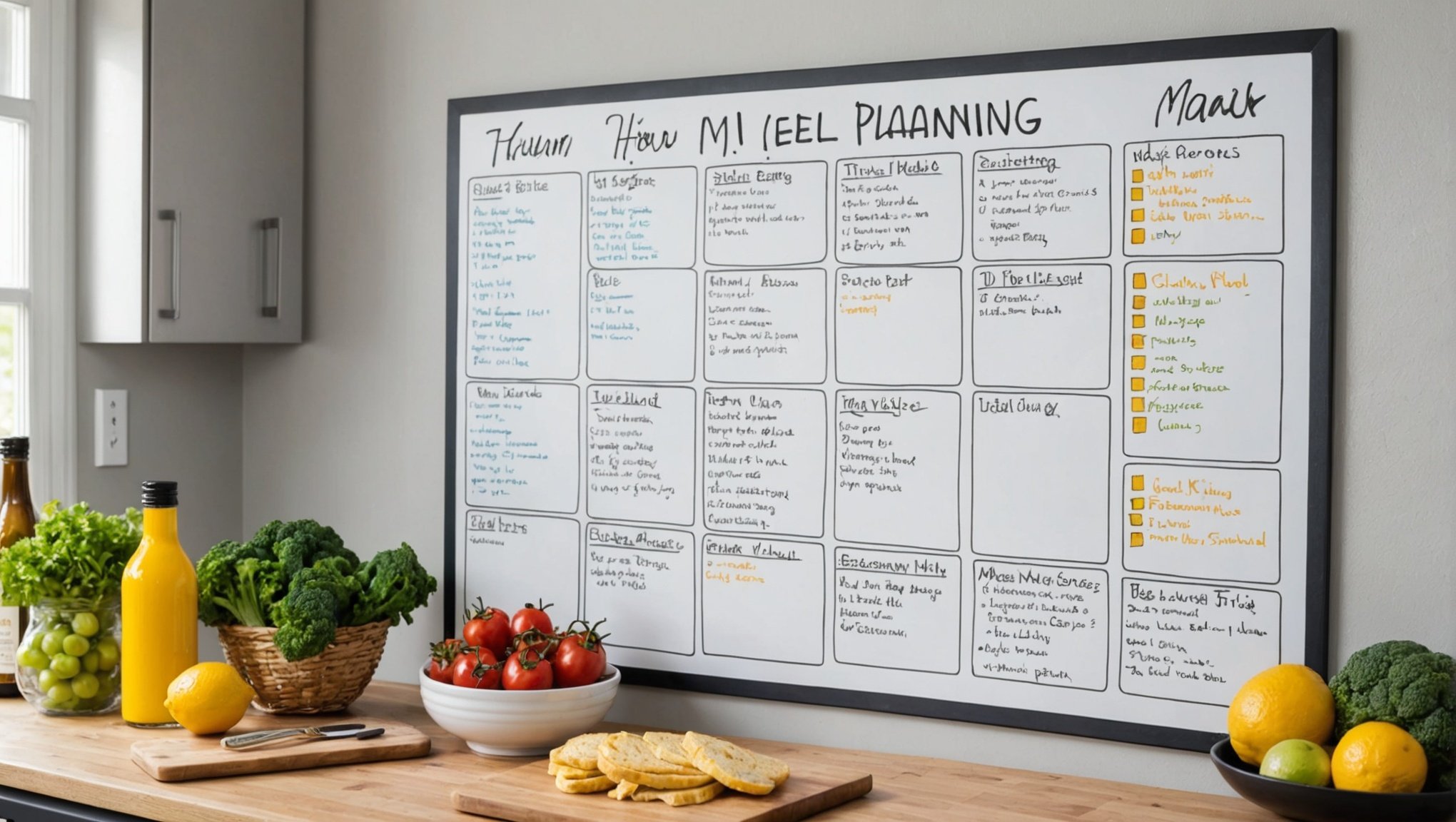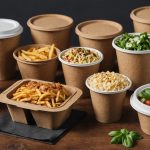Meal planning can feel overwhelming, especially when trying to maintain a slim diet. A meal planning whiteboard can transform your kitchen into an organized haven, making healthy eating more accessible and enjoyable. With easy visual cues and a customizable layout, this tool helps streamline your meal prep, reduces food waste, and inspires creativity. Discover how incorporating a whiteboard can simplify your diet journey, turning food management into a fun and engaging experience.
Benefits of Using a Meal Planning Whiteboard
A meal planning whiteboard can significantly enhance your culinary routine through its visual organization of meals. This tool allows you to lay out your weekly meals clearly, helping you to see at a glance what’s on the menu. By displaying meals visually, it becomes easier to identify gaps or redundancies in your plan, ensuring a more balanced and varied diet.
This might interest you : Transform Your Kitchen: The Benefits of a Centralized Vacuum System for a Clean and Allergen-Free Cooking Environment
Moreover, a whiteboard boosts accountability in meal preparation. When your planned meals are visible, you’re more likely to stick to them, reducing the temptation to opt for less healthy alternatives. This visual cue serves as a constant reminder of your commitment to eating well, which can be especially beneficial in maintaining dietary goals.
In addition to organization and accountability, meal planning with a whiteboard encourages healthier choices. By planning meals in advance, you can ensure that your diet includes a variety of nutrients. This proactive approach allows for more thoughtful grocery shopping, reducing impulse buys of unhealthy snacks. Ultimately, the whiteboard becomes a tool not only for planning but also for fostering a healthier lifestyle.
In the same genre : Transform Your Kitchen: The Benefits of a Centralized Vacuum System for a Clean and Allergen-Free Cooking Environment
Tips for Effective Meal Planning
To make meal planning successful, incorporating strategic tips can be invaluable. These strategies not only simplify the process but also enhance its effectiveness.
Setting Realistic Goals
When embarking on a meal planning journey, it’s crucial to set realistic goals. Begin by assessing your current eating habits and identifying areas for improvement. Consider what you can feasibly achieve within your lifestyle. Setting overly ambitious targets can lead to frustration and discouragement. Instead, focus on small, incremental changes that align with your long-term slim diet strategies.
Keeping a Well-Stocked Pantry
A well-stocked pantry is the backbone of effective meal planning. Ensure you have essential ingredients that can be used in multiple recipes. Stock up on staples like grains, canned goods, and spices, which provide a foundation for various meals. This approach not only saves time but also supports healthier choices by reducing the need for last-minute, less nutritious alternatives.
Scheduling Meal Prep Times
Scheduling specific times for meal prep can streamline the planning process. Allocate a few hours each week to prepare ingredients or cook meals in advance. This practice helps maintain consistency and reduces stress during busy weekdays. By integrating meal prep into your routine, you create a sustainable system that supports your dietary goals and enhances the overall success of your meal planning efforts.
Meal Ideas for a Slim Diet
Exploring healthy meal ideas can transform your dietary habits and support a slim diet. Incorporating a variety of meals into your routine ensures nutritional balance and keeps your menu exciting.
Breakfast Options
Start your day with nutrient-packed breakfasts that energise you without excess calories. Consider a smoothie bowl with spinach, banana, and almond milk, topped with chia seeds and berries. Another option is overnight oats with Greek yogurt, honey, and sliced almonds. These meals provide essential nutrients, keeping you full and focused throughout the morning.
Lunch and Dinner Recipes
For lunch, try a quinoa salad mixed with cherry tomatoes, cucumber, and feta cheese, dressed with lemon and olive oil. It’s a refreshing, protein-rich meal that’s quick to prepare. Dinner can feature grilled salmon with a side of roasted vegetables or a stir-fry with tofu, broccoli, and bell peppers, seasoned with ginger and soy sauce. These dishes are both satisfying and aligned with slim diet recipes.
Healthy Snacks and Desserts
Snacks and desserts can be both indulgent and healthy. Opt for carrot sticks with hummus or a handful of mixed nuts for snacks. For dessert, enjoy a bowl of fresh fruit or a small portion of dark chocolate. These choices satisfy cravings while maintaining your dietary goals.
Organizational Strategies for Kitchen Efficiency
Enhancing kitchen organization can significantly boost your meal prep efficiency. By implementing smart strategies, you can transform your kitchen into a streamlined, functional space that supports your culinary goals.
Utilizing Storage Solutions
Effective storage solutions are key to a well-organized kitchen. Consider using clear containers for dry goods, allowing you to see contents at a glance. Stackable bins and drawer dividers can help maximize space and keep items easily accessible. Label containers to quickly identify ingredients, reducing prep time and minimizing stress during cooking.
Creating Designated Meal Prep Areas
Designating specific areas for meal prep can enhance your kitchen’s functionality. Allocate counter space for chopping, mixing, and assembling ingredients. Having a dedicated area ensures that all necessary tools and ingredients are within reach, making the process more efficient. This setup encourages a smooth workflow, reducing interruptions and enhancing overall meal prep efficiency.
Streamlining Cooking Processes
Streamlining your cooking processes involves organizing tools and appliances for easy access. Store frequently used items, like knives and cutting boards, near your prep area. Arrange pots, pans, and utensils in a logical order based on your cooking routine. This organization minimizes time spent searching for tools, allowing you to focus on creating delicious meals efficiently.
Incorporating Visuals into Meal Planning
Incorporating meal planning visuals into your routine can revolutionize how you approach your culinary schedule. By utilizing a whiteboard, you can create an engaging and functional plan that enhances both visibility and motivation.
Examples of Effective Meal Planning Boards
Effective meal planning boards often feature creative layouts that cater to individual preferences. Some prefer a weekly grid with sections for breakfast, lunch, dinner, and snacks, which provides a comprehensive overview at a glance. Others may opt for a more flexible approach, using columns for different meal types or dietary goals. The key is to find a layout that suits your needs and keeps you inspired.
Creative Layouts for Easy Visibility
Whiteboard design ideas can include colour-coded sections or thematic stickers to highlight different food groups or cooking methods. This visual differentiation aids in quick reference and helps maintain a balanced diet. Incorporating magnets or small clips can also allow for easy adjustments, making the board adaptable to last-minute changes.
Inspirational Meal Planning Setups
For those seeking inspiration, online platforms like Pinterest offer a plethora of meal planning visuals that showcase innovative setups. These examples can spark creativity and encourage you to personalize your board, making meal planning an enjoyable and efficient part of your routine.
Overcoming Common Meal Planning Challenges
Navigating meal planning challenges can be daunting, but with strategic solutions, you can maintain a successful routine, especially when following a slim diet.
Dealing with Time Constraints
Time constraints often hinder effective meal planning. To combat this, consider preparing ingredients in advance. Chop vegetables, marinate proteins, or cook grains over the weekend to save time during busy weekdays. Using a slow cooker or pressure cooker can also expedite meal preparation, allowing you to enjoy home-cooked meals without extensive time investment.
Managing Picky Eaters
Picky eaters can pose a significant challenge. Involve them in the meal planning process by allowing them to choose from a selection of healthy options. Creating meals with versatile components, like build-your-own tacos or customizable pasta dishes, can cater to varied preferences while maintaining nutritional balance.
Staying Motivated and Consistent
Staying motivated and consistent with meal planning requires setting achievable goals and celebrating small victories. Keep your meal planning solutions visible and track progress to reinforce positive habits. Incorporating new recipes or themes, such as international cuisine nights, can add excitement and prevent monotony, ensuring your meal planning journey remains engaging and effective.
Resources and Tools for Meal Planning
Incorporating the right meal planning resources and tools can elevate your culinary efficiency. Several apps are designed to simplify meal planning, offering features like recipe suggestions, grocery lists, and nutritional tracking. Popular examples include Mealime, Paprika, and Yummly, each providing unique functionalities to suit different preferences. These apps not only streamline planning but also enhance your ability to maintain a balanced diet by suggesting diverse recipes.
Beyond apps, consider investing in useful kitchen gadgets to aid meal prep. Tools such as a slow cooker, food processor, or instant pot can significantly reduce preparation time, making it easier to stick to your meal plan. These gadgets help in preparing bulk meals and experimenting with various cooking methods, adding variety to your diet.
Engaging with online meal planning communities can also offer support and inspiration. Platforms like Reddit’s MealPrepSunday or Facebook groups dedicated to meal planning provide a space to exchange ideas, share experiences, and discover new recipes. These communities foster a collaborative environment where members encourage each other to stay motivated and consistent in their meal planning efforts, ensuring a successful journey towards healthier eating habits.






